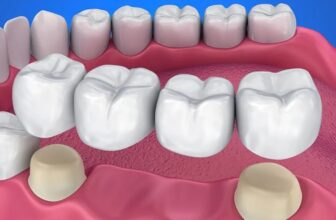
In the global medical device market, compliance with ISO regulations is essential for ensuring the quality and safety of products. ISO Regulations For Medical Devices provide a framework for manufacturers to establish and maintain effective quality management systems, thereby enhancing product quality and customer satisfaction. Understanding these regulations is crucial for medical device companies seeking to compete in a global landscape.
What Are ISO Regulations for Medical Devices?
ISO Regulations For Medical Devices refer to international standards developed by the International Organization for Standardization (ISO) that provide guidelines for quality management and assurance in the medical device industry. The most notable standard is ISO 13485, which outlines the requirements for a quality management system specific to medical devices.
ISO 13485 focuses on ensuring that manufacturers consistently meet regulatory requirements and customer expectations while enhancing the safety and effectiveness of medical devices. Compliance with ISO standards is often a prerequisite for entering international markets and can be crucial for gaining regulatory approval in various countries.
Key ISO Standards for Medical Devices
- ISO 13485: This standard specifies requirements for a quality management system that demonstrates an organization’s ability to provide medical devices and related services that consistently meet customer and regulatory requirements. ISO 13485 covers various aspects of the device lifecycle, including design, development, production, and post-market activities.
- ISO 14971: This standard provides a framework for risk management in medical devices. It guides manufacturers in identifying hazards, evaluating risks, and implementing controls to mitigate those risks throughout the device lifecycle.
- ISO 9001: Although not specific to medical devices, ISO 9001 sets out the criteria for a quality management system. Many medical device manufacturers integrate ISO 9001 principles into their QMS to enhance overall quality and efficiency.
- ISO 62304: This standard outlines the life cycle requirements for medical device software. As software becomes increasingly integral to medical devices, adherence to ISO 62304 is essential for ensuring the software’s safety and effectiveness.
- ISO 17025: For testing and calibration laboratories, ISO 17025 specifies requirements for quality management and technical competence. Compliance with this standard is crucial for laboratories involved in the testing of medical devices.
The Importance of Compliance with ISO Regulations
Compliance with ISO Regulations For Medical Devices offers several benefits:
- Enhanced Product Quality: By adhering to international standards, manufacturers can establish effective quality management systems that improve product quality and reliability.
- Market Access: Many countries require ISO certification for medical devices to be marketed. Compliance with ISO standards opens doors to international markets and enhances a manufacturer’s competitive edge.
- Regulatory Compliance: ISO standards align with various regulatory requirements, such as those set by the FDA and the European Medicines Agency (EMA). Implementing ISO regulations helps ensure compliance with these regulations.
- Risk Management: ISO standards, particularly ISO 14971, provide a structured approach to risk management, allowing manufacturers to identify and mitigate potential hazards associated with their devices.
- Customer Satisfaction: A commitment to quality and regulatory compliance enhances customer trust and satisfaction, which is vital for the success of medical device manufacturers.
Challenges in Implementing ISO Regulations
While the benefits of compliance with ISO Regulations For Medical Devices are significant, manufacturers may encounter several challenges:
- Resource Requirements: Implementing an effective QMS requires substantial resources, including time, personnel, and financial investment.
- Documentation and Record-Keeping: Maintaining comprehensive documentation and records is essential for compliance. This can be burdensome, particularly for smaller manufacturers.
- Training and Competency: Ensuring that employees are adequately trained in ISO requirements and quality management practices is critical. Continuous training and education are necessary to maintain compliance.
- Managing Change: As regulations evolve, manufacturers must adapt their processes and systems accordingly. This can be challenging, particularly for organizations with established practices.
Steps to Achieve Compliance with ISO Regulations
To successfully implement ISO Regulations For Medical Devices, manufacturers can follow these steps:
- Conduct a Gap Analysis: Assess the current quality management system against ISO standards to identify areas for improvement and establish a roadmap for compliance.
- Develop a Quality Management System: Create and implement a comprehensive QMS that aligns with ISO standards, focusing on design controls, risk management, and documentation.
- Train Employees: Provide training for all employees on ISO regulations and quality management practices to ensure they understand their roles and responsibilities.
- Perform Internal Audits: Regularly conduct internal audits to evaluate compliance with ISO standards and identify areas for improvement.
- Engage Third-Party Certification Bodies: Consider working with accredited certification bodies to obtain ISO certification, which can enhance credibility and demonstrate commitment to quality.
Conclusion
Compliance with ISO Regulations For Medical Devices is essential for manufacturers seeking to establish a strong reputation in the global market. By implementing effective quality management systems and adhering to international standards, companies can enhance product quality, ensure regulatory compliance, and improve customer satisfaction. While challenges may arise in the implementation process, the benefits of ISO compliance far outweigh the hurdles, making it an essential focus for any medical device manufacturer.







